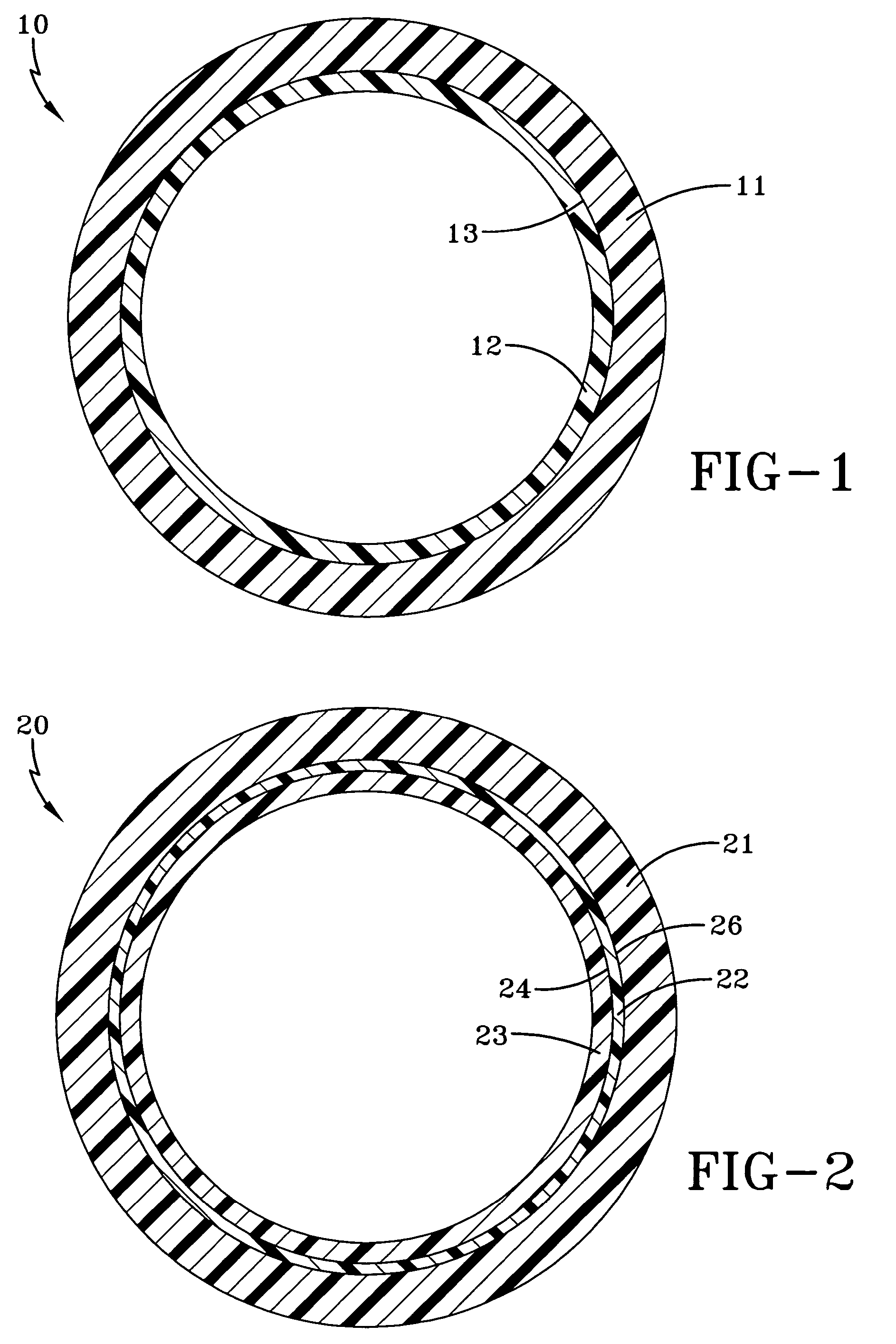Polyefinic pipe having a chlorinated polyolefinic hollow core
a polyefinic pipe and hollow core technology, applied in the field of hollow cores, can solve the problems of unsatisfactory bonding, evoh layer is known to be susceptible to cracking when expanded, and the evoh layer is known to be susceptible to oxidizing agent diffusion and reaction into the po wall, and achieves the effect of improving the oxidation resistance of the composite tubular body
- Summary
- Abstract
- Description
- Claims
- Application Information
AI Technical Summary
Benefits of technology
Problems solved by technology
Method used
Image
Examples
Embodiment Construction
[0024]Adhesion of either a b-CPO or r-CPO or pr-CPO surface to a PO surface cannot be predicted by the particular characteristics of an interfacial agent which provides good adhesion between a polyolefin rubber dispersed in either a PVC phase or a CPVC phase, or both phases. Further, since b-CPO, r-CPO and pr-CPO containing from 5% to less than 50% by weight Cl, are each extruded at about the same temperature and pressure it was reasonable to expect that extruding polyolefin, say PEX, over b-CPE or r-CPE or pr-CPE (the corresponding chlorinated polyolefin), would maintain the integrity of the cylindrical layer of chlorinated polyolefin flowing as a tubular core beneath the overlying PEX, but the type of bond obtained is not predictable, particularly if the desired wall-thickness of the tubular core was to be less than 0.5 mm (0.020″).
[0025]Moreover, though a blend of PVC / CPVC and a polyolefin rubber compatibilized with a b-CPO is readily extrudable at a temperature at which neither ...
PUM
| Property | Measurement | Unit |
|---|---|---|
| Temperature | aaaaa | aaaaa |
| Temperature | aaaaa | aaaaa |
| Temperature | aaaaa | aaaaa |
Abstract
Description
Claims
Application Information
 Login to View More
Login to View More - R&D
- Intellectual Property
- Life Sciences
- Materials
- Tech Scout
- Unparalleled Data Quality
- Higher Quality Content
- 60% Fewer Hallucinations
Browse by: Latest US Patents, China's latest patents, Technical Efficacy Thesaurus, Application Domain, Technology Topic, Popular Technical Reports.
© 2025 PatSnap. All rights reserved.Legal|Privacy policy|Modern Slavery Act Transparency Statement|Sitemap|About US| Contact US: help@patsnap.com


